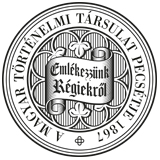Századok – 2013
TANULMÁNYOK - Zakar Péter: Csanádi egyházmegyés paphonvédek a szabadságharcban II. Csanádi egyházmegyés tábori lelkészek 1848/49-ben III/585
PRIEST-SOLDIERS FROM THE DIOCESE OF CSANÁD IN THE HUNGARIAN WAR OF INDEPENDENCE IN 1848-1849 II. FIELD PADRES FROM THE DIOECESE OF CSANÁD By Péter Zakar (Summary) CSANÁDI EGYHÁZMEGYÉS PAPHONVÉDEK A SZABADSÁGHARCBAN 623 Most of the priest-soldiers from the dioecese of Csanád fought as padres in the War of Independence in 1848-1849. More than a dozen priests from the dioecese served as such in the national militia. Most of them were convinced supporters of the war; József Brassay, Jakab Nuszbaum and Péter Kimmel were, for instance, arrested by the imperial authorities after the capitulation. The disciplinary situation of the field priests serving in the army was similar to those who took up arms, and the two groups even had a common member in the person of Pál Rózsafy (Rosen). Alajos Magyari protested against compulsory celibacy, József Brassoványi had a conflict with his parish priest, Antal Schaeffer fought in the battle of Nagyjécsa, Flórián Lukesch Flórián converted to Lutheranism and married, whereas Xaver Ferenc Tóth was in a continuous conflict with his parishioners of Nagytószeg (Heufeld). Several among them (József Kornis, Frigyes Kerényi, Béla Krix, Antal Schaeffer) fled from the Serbian rebels, and it was partly for this reason that they took up field service. All of them discharged the duties which were connected to their priestly office, and transmitted the copies of the relevant certificates to their superiors. It was also one of the tasks attributed to them to be present unarmed on the battlefield and fire the soldiers. Their preaching extended to the explication of political changes and the justification of the aims of the war itself. The fact that many German priests from the dioecese of Csanád served in the Hungarian army shows that the so-called petition of Bogáros was not alone in defining the political orientation of the Germans in the Bánság. The curriucula of the field padres offer interesting turns even after the suppression of the war of independence. Alajos Magyari made precious services to Hungarian archaeology by supporting the excavations at Pankota. Alajos Kornis enriched the agricultural literature with articles on viti- and viniculture. József Brassoványi obtained a parish at Sándorháza with the help of György Haulik, archbishop of Zagreb. Frigyes Kerényi returned to the service as field priest in 1855, then in the imperial army. Antal Schaeffer entered a political career, while Xaver Ferenc Tóth lived on as a rich entrepreneur (owner of houses). The most spectacular church career among the sometime padres was run by József Mihálovics (Munkácsi), who was appointed archbishop of Zagreb in 1870 and later created a cardinal.
